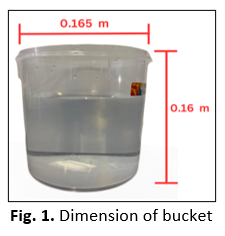Evaluating the Buoyant Capabilities of Raft House Models
DOI:
https://doi.org/10.37934/afhme.4.1.19aKeywords:
Floating structures, buoyancy, flotation devices, load capacity, stabilityAbstract
Raft houses offer a practical solution for flood-prone and land-scarce regions, but their stability and load-bearing capacity remain challenges. This study evaluates the effect of flotation devices on raft buoyancy by comparing two models: one relying solely on its material for flotation and another equipped with inflatable bubble wraps. The experiment involved incrementally loading both rafts with marbles, recording weight limits at half-submersion and full submersion. The raft without flotation devices reached half-submersion at 67 marbles (6.88 N) and fully submerged at 110 marbles (11.30 N). In contrast, the raft with flotation devices remained stable at 80 marbles (8.22 N) and reached full submersion at 120 marbles (14.48 N). The addition of flotation devices improved buoyancy by 19.4% at half-submersion and increased load capacity by 9.1% at full submersion. Furthermore, the flotation-enhanced raft exhibited reduced tilting and better stability under uneven loading conditions. These results align with Archimedes’ principle, demonstrating that increasing displaced water volume enhances buoyant force. The findings confirm that integrating flotation devices significantly improves the structural performance of raft houses, making them more viable for practical applications. The use of low-cost, readily available materials such as inflatable bubble wraps presents an accessible solution for improving floating structures, particularly in flood-affected communities. This research contributes valuable insights into sustainable raft design, with implications for disaster relief housing and modular floating platforms. Future studies should investigate full-scale implementations, alternative flotation materials, and performance under real-world conditions, including wave and current interactions. Computational simulations could further refine flotation placement strategies to optimize buoyancy and stability. By demonstrating the effectiveness of flotation devices, this study supports the development of more resilient, adaptable, and cost-effective floating structures suited to diverse environmental conditions













